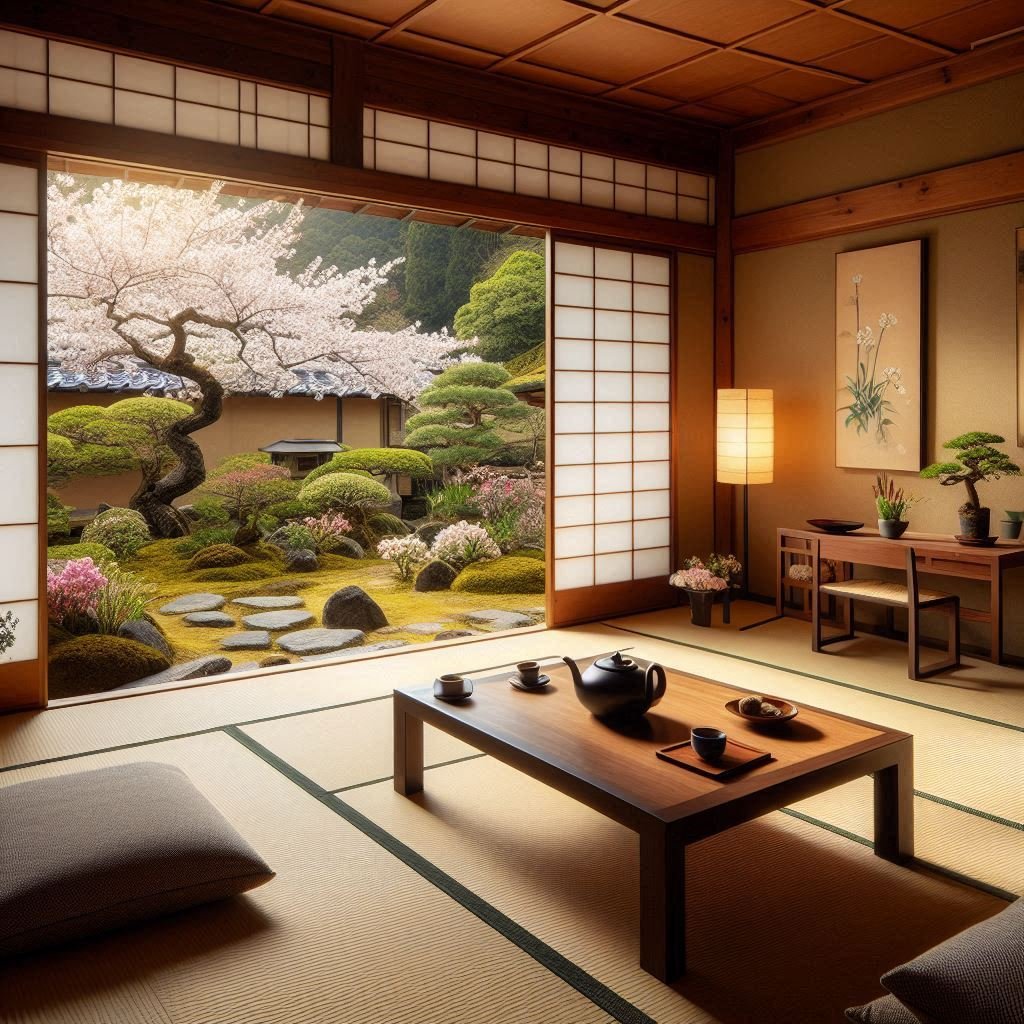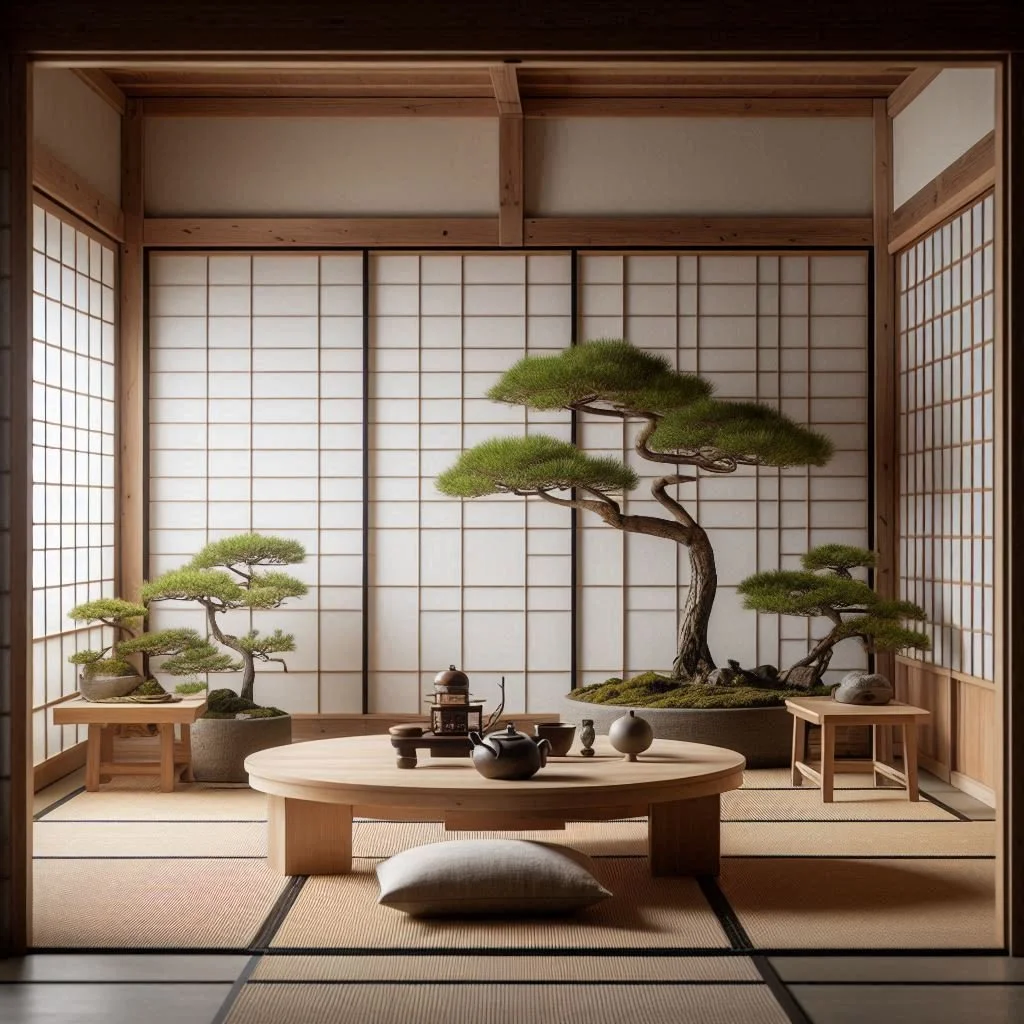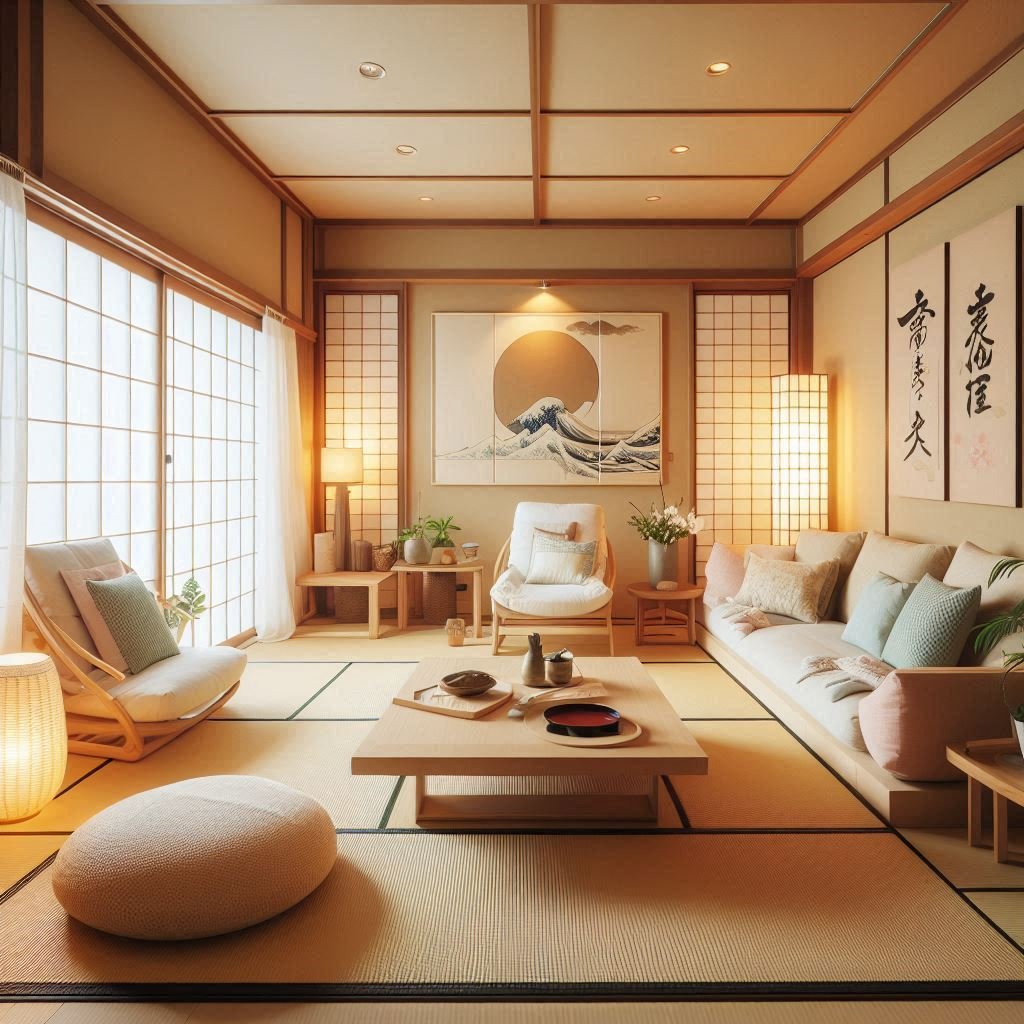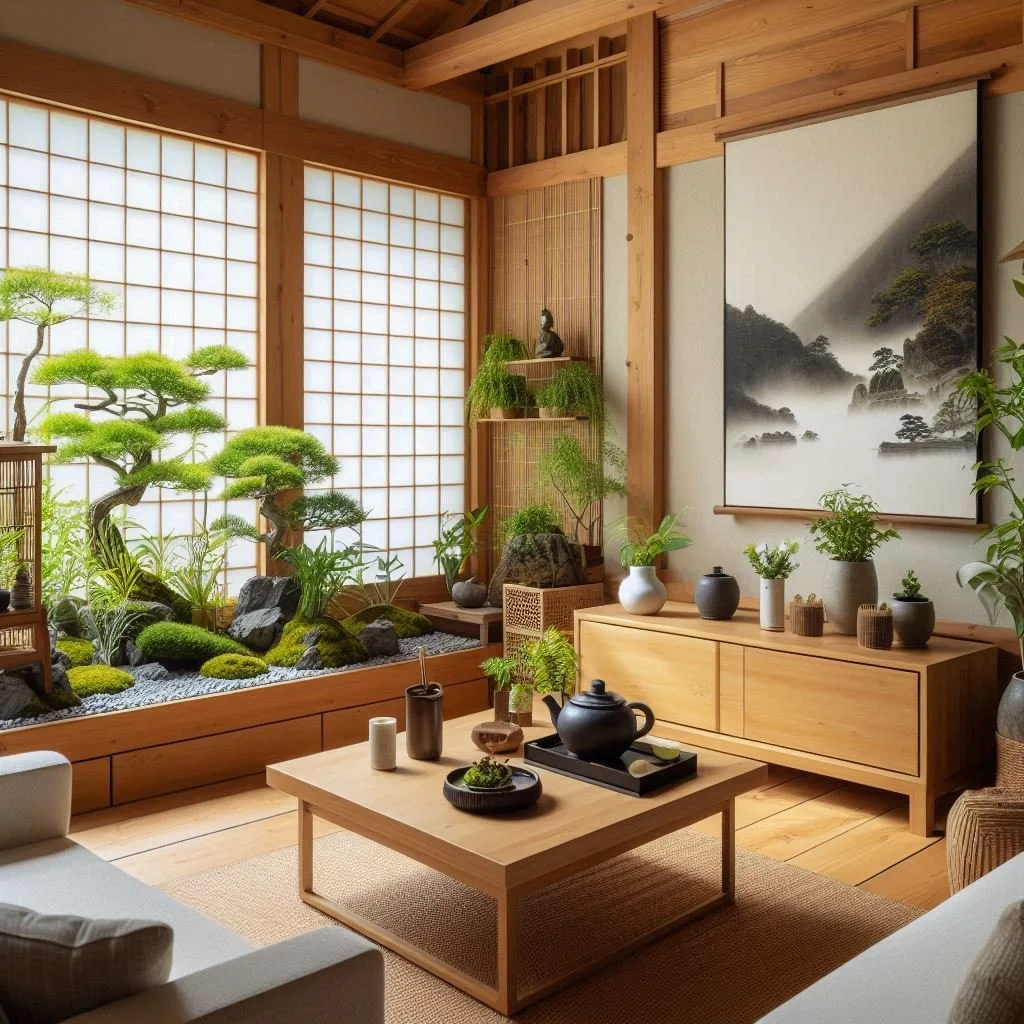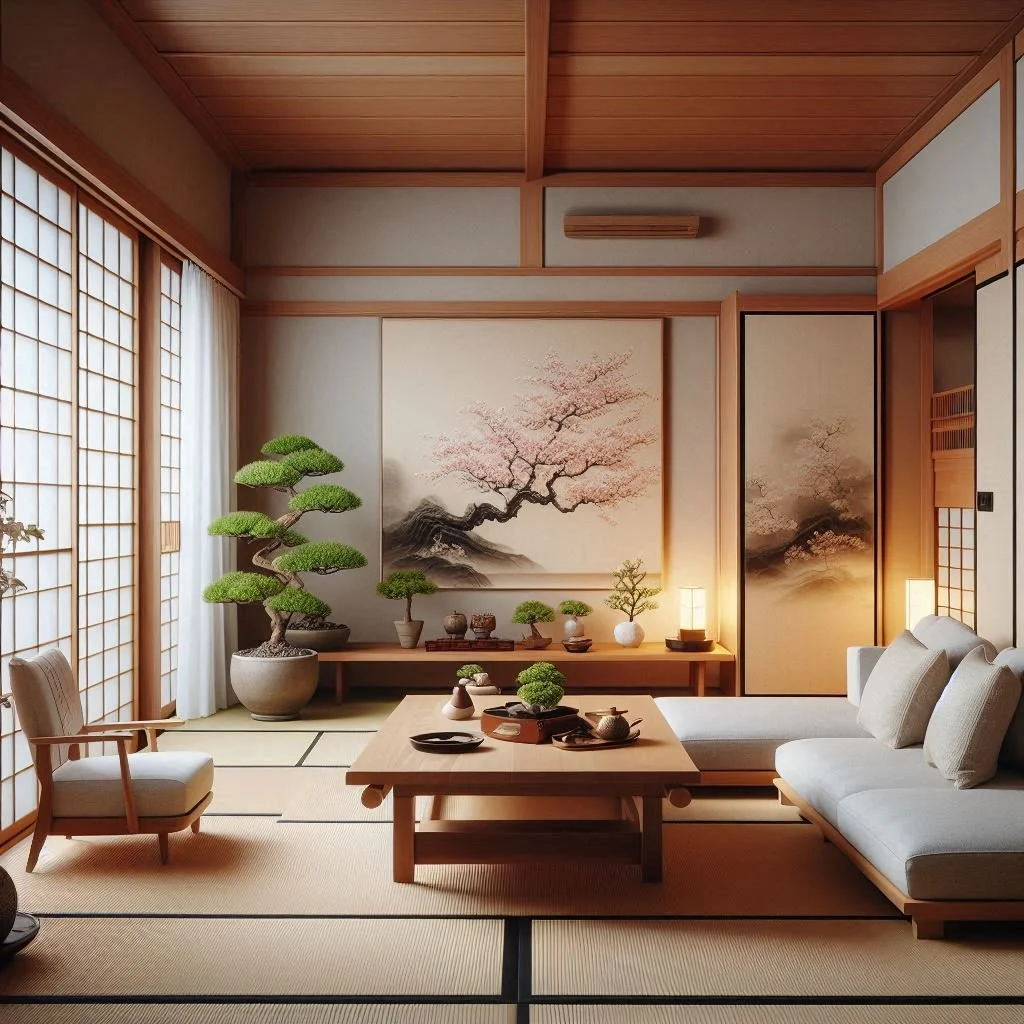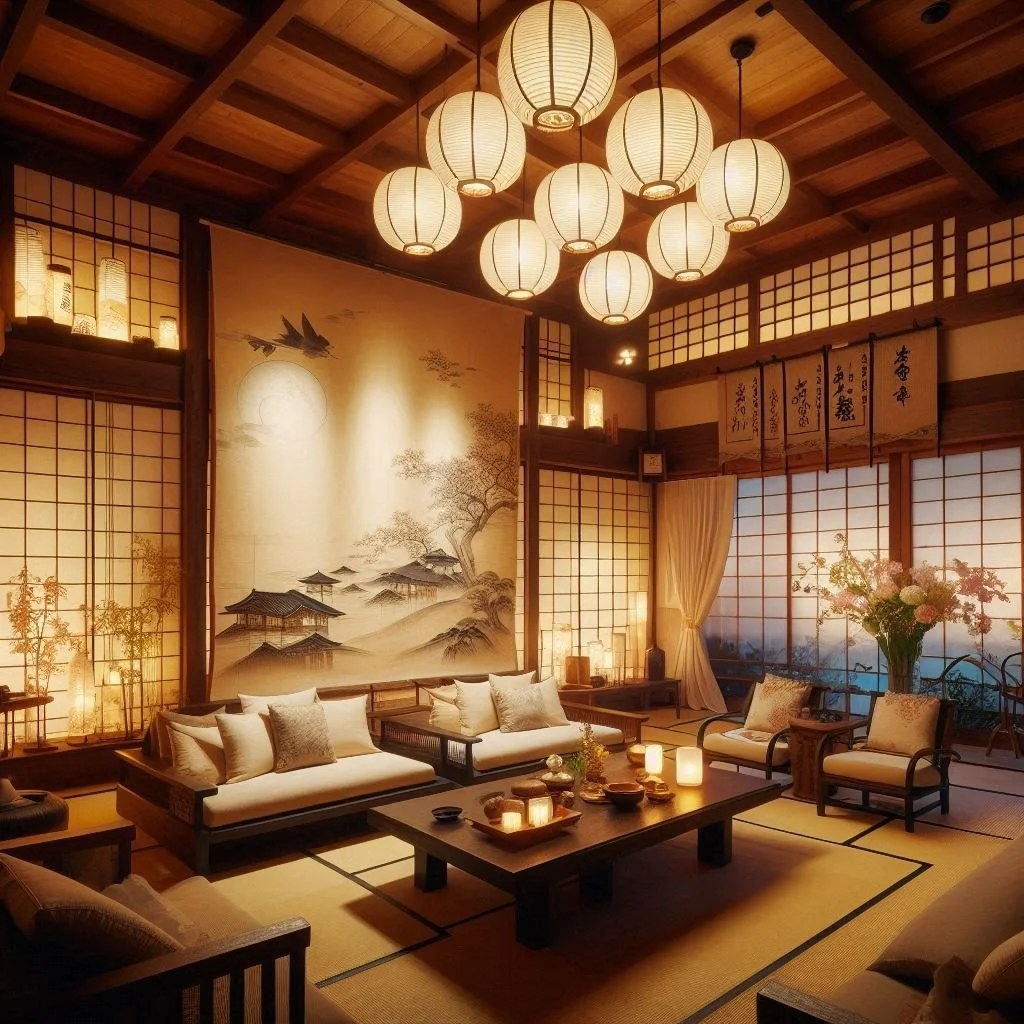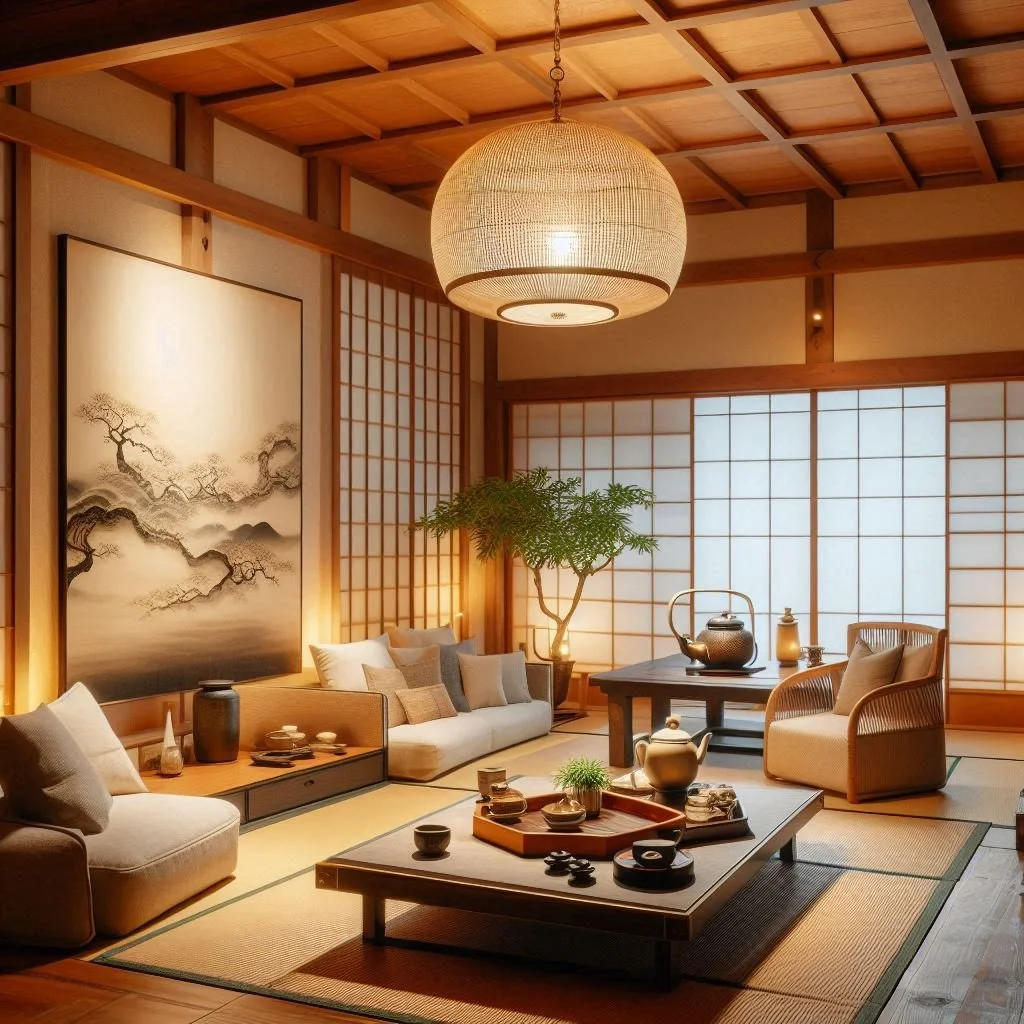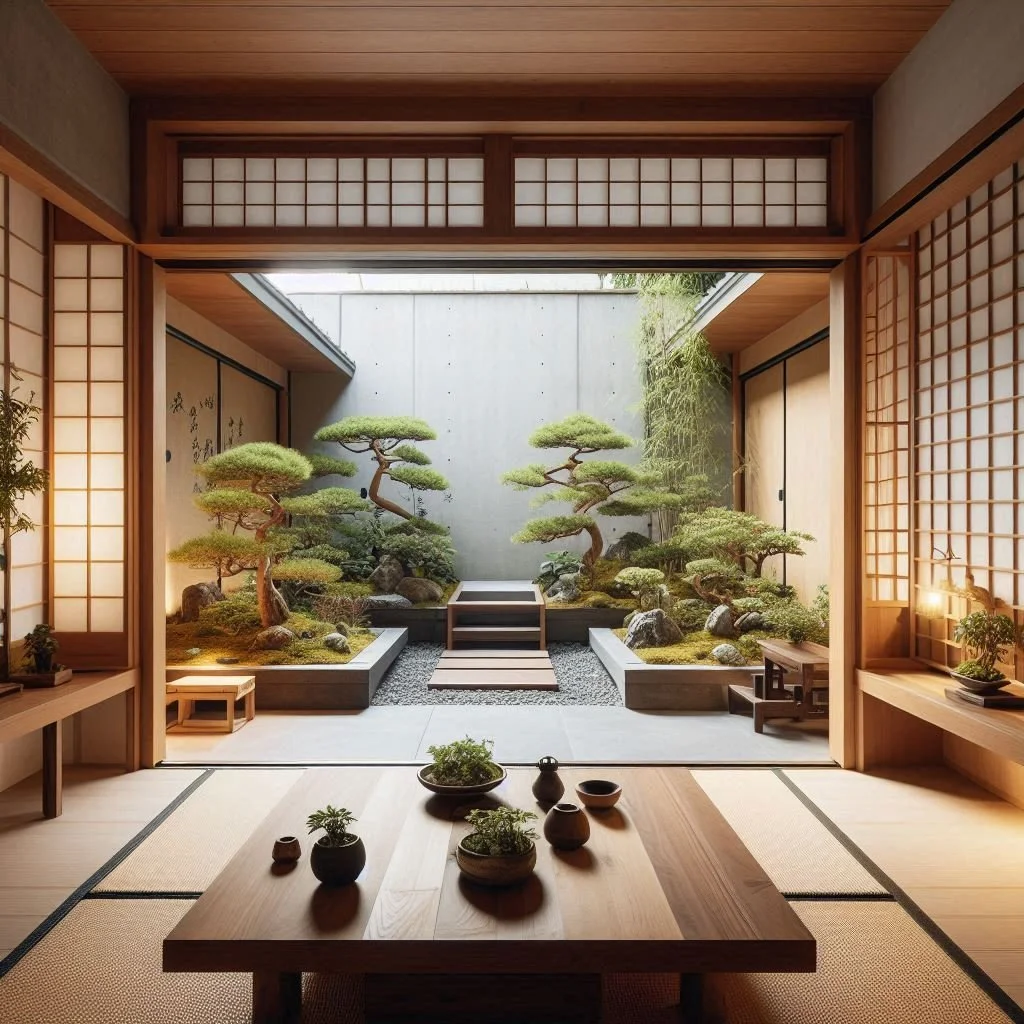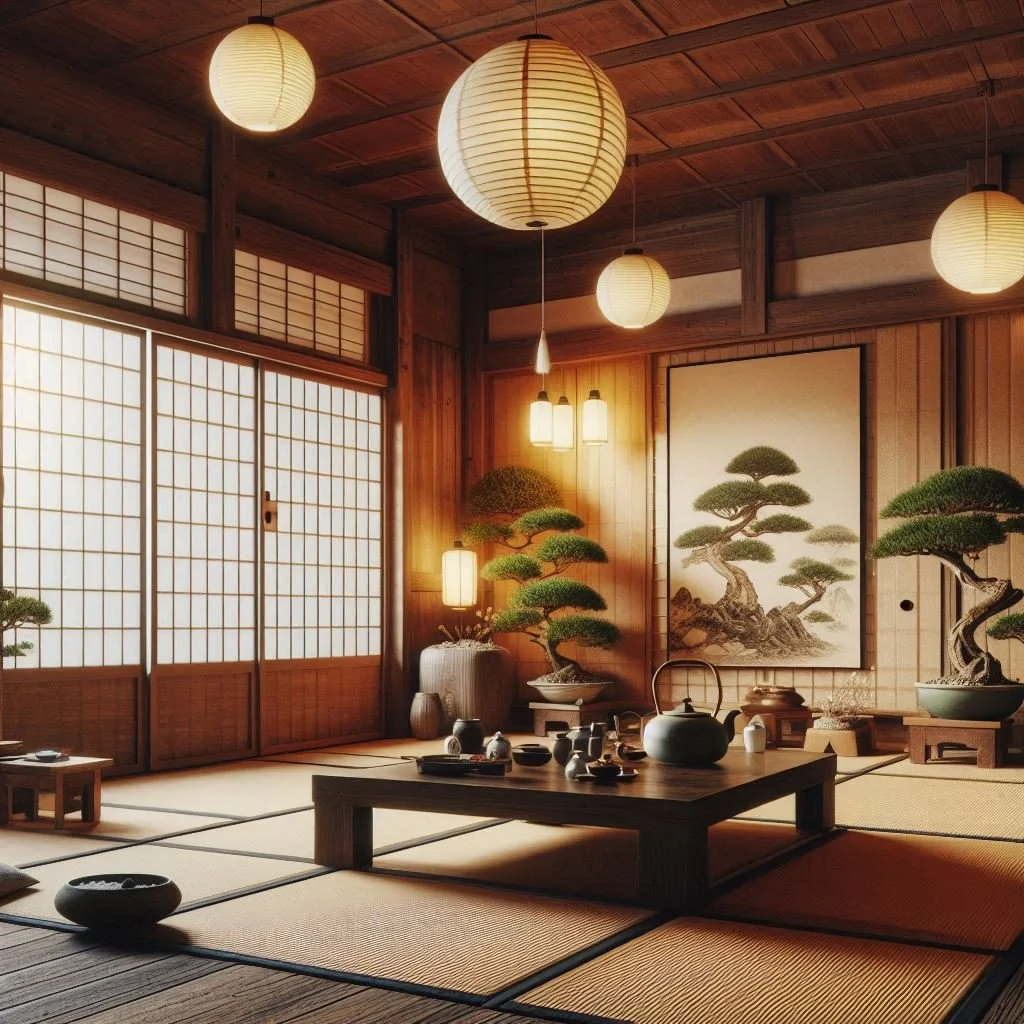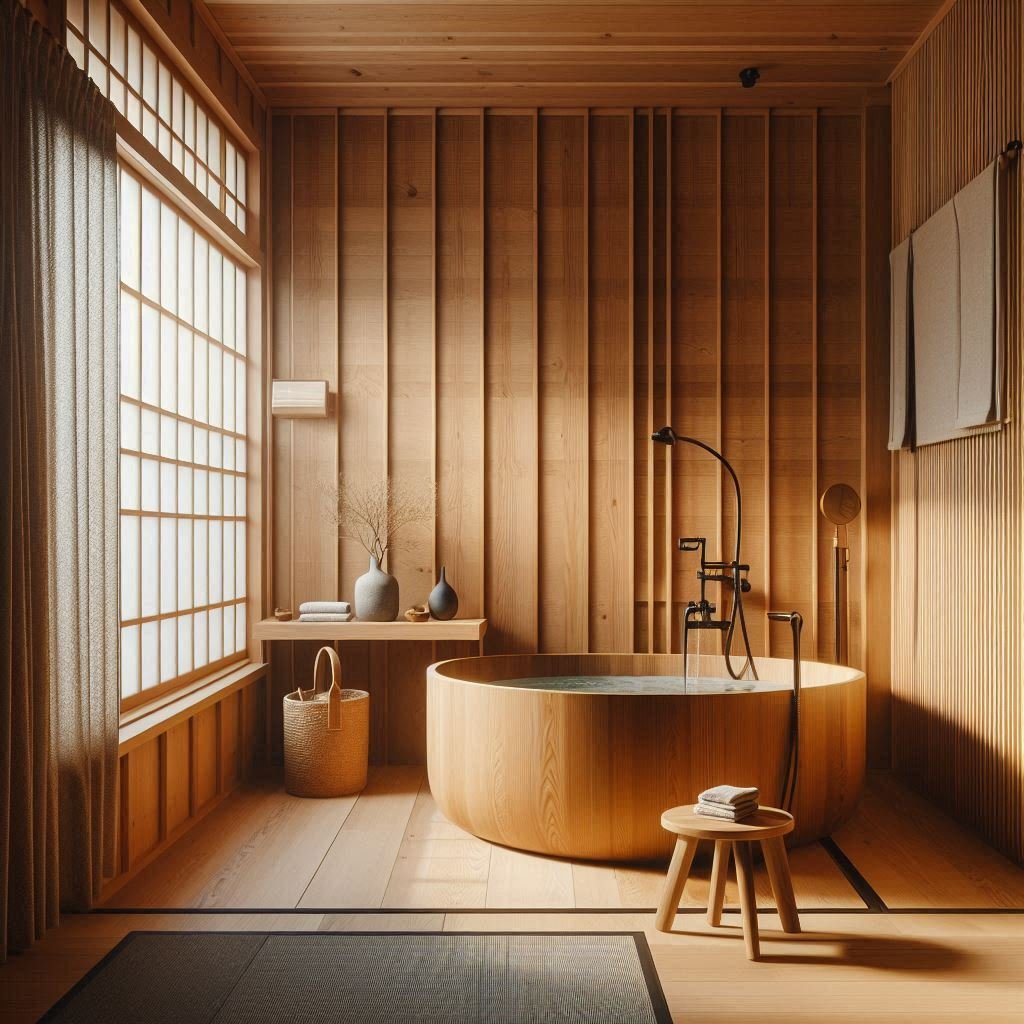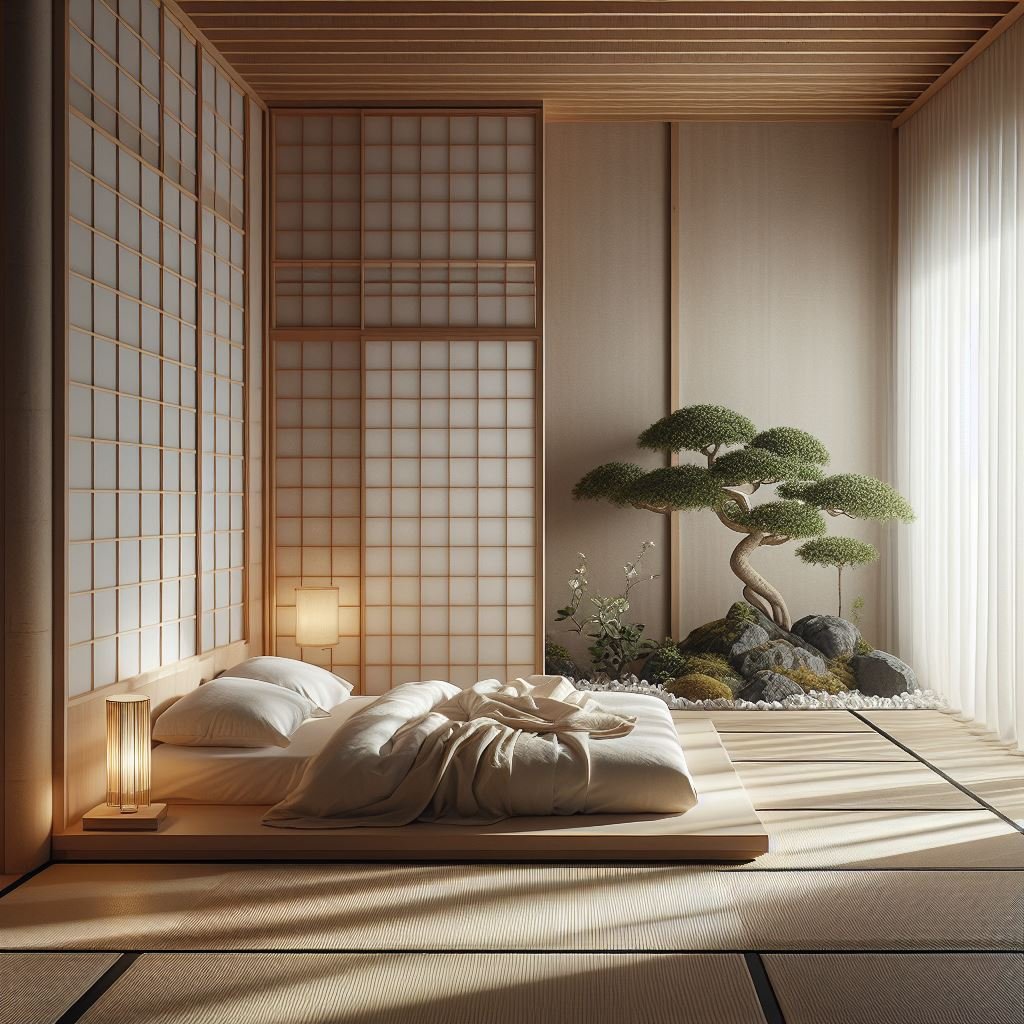15 Elegant Japanese Living Room Ideas for Serenity
Discover 15 elegant Japanese living room ideas that bring serenity and style to your home. Explore minimalist designs, natural elements, and harmonious layouts to create a peaceful retreat.
Imagine stepping into a living room that instantly calms your senses, a space where elegance meets tranquility. This is the essence of Japanese living room design. Rooted in minimalism, natural materials, and a deep appreciation for simplicity, Japanese decor creates an environment that feels both serene and sophisticated. In this article, we’ll explore 15 elegant Japanese living room ideas that can transform your home into a peaceful retreat.
1. Embrace Minimalism
One of the core principles of Japanese decor is minimalism. This approach involves decluttering your living space and focusing on essential items. By eliminating excess and emphasizing simplicity, you create a calming and open environment. Begin by evaluating your current decor and removing items that do not serve a purpose or bring you joy. Streamlining your belongings allows the remaining elements to stand out, fostering a serene and harmonious atmosphere. This minimalist philosophy not only enhances aesthetic appeal but also promotes mental clarity and peace. Embrace natural materials, neutral colors, and functional design to achieve a balanced and tranquil living space that embodies the essence of Japanese minimalism.
2. Use Natural Materials
Natural materials like wood, bamboo, and stone are fundamental in Japanese design. These elements bring a sense of nature indoors, promoting a peaceful and grounded atmosphere. Consider incorporating wooden furniture, bamboo blinds, and stone accents to create a harmonious balance between the indoors and the natural world. Wooden furniture adds warmth, bamboo blinds provide a soft, diffused light, and stone accents introduce a touch of rugged, natural beauty. Together, these materials create a serene and inviting environment that fosters relaxation and well-being. Embracing natural materials in your decor not only enhances the aesthetic appeal but also connects your living space to the calming essence of nature.
3. Incorporate Sliding Doors (Shoji)
Shoji screens are traditional Japanese sliding doors made from wooden frames and translucent paper, allowing light to filter through while maintaining privacy. These screens can be used as room dividers or window coverings, adding an authentic touch to your living room. Their design enhances natural light, creating a serene and airy ambiance. Additionally, shoji screens contribute to a minimalist aesthetic by providing subtle separation between spaces without the heaviness of solid walls. Incorporating shoji screens into your decor brings a blend of elegance and functionality, reflecting the timeless beauty of Japanese design. Their versatility and classic appeal make them an excellent choice for creating a peaceful and harmonious living environment.
4. Introduce Tatami Mats
Tatami mats are a quintessential element of Japanese interiors, made from rice straw and woven rush grass. These mats provide a natural and comfortable flooring option, adding a sense of authenticity and tranquility to your living space. You can use tatami mats to cover the entire floor or create a designated sitting area within your living room. Their soft, cushioned texture is perfect for sitting or lying down, promoting a relaxed and meditative atmosphere. Tatami mats also help regulate humidity and temperature, enhancing comfort year-round. Incorporating tatami mats into your decor not only honors traditional Japanese design but also introduces a functional and aesthetically pleasing element to your home.
5. Create a Zen Garden Corner
A small Zen garden can bring a sense of tranquility to your living room, creating a peaceful landscape with sand, stones, and miniature plants. This meditative space serves as both a decorative focal point and a practical reminder to embrace mindfulness in your daily life. The simple act of raking the sand into patterns can be soothing and stress-relieving, promoting a sense of calm and focus. Position your Zen garden on a coffee table or a dedicated shelf to enhance the room's ambiance and provide a serene retreat within your home. Incorporating a Zen garden fosters a connection to nature and encourages a balanced, reflective mindset.
6. Use Low Furniture
Japanese living rooms often feature low furniture to promote a sense of intimacy and connection to the earth. Consider incorporating low tables, floor cushions, and futon sofas to create a traditional yet comfortable space. This arrangement aligns with Japanese aesthetics, encouraging a relaxed and grounded seating experience. Low furniture fosters a closer connection with the floor, enhancing the room's warmth and coziness. It also facilitates a more intimate and communal atmosphere, perfect for gatherings or quiet reflection. By embracing this design approach, you can create a serene and inviting living room that embodies the essence of Japanese simplicity and tranquility.
7. Highlight Natural Light
Natural light is a cornerstone of Japanese design, playing a crucial role in creating a bright and airy atmosphere. Large windows, sliding doors, and skylights are essential to flood the space with daylight. To maximize the flow of natural light while maintaining privacy, use light, sheer curtains. These curtains allow sunlight to gently filter through, enhancing the room's openness and serenity. By embracing natural light, you create a warm, inviting environment that connects the indoors with the natural world outside, reflecting the harmonious balance central to Japanese aesthetics. This approach not only brightens the space but also contributes to a calming and tranquil ambiance.
8. Add Indoor Plants
Indoor plants are essential for infusing life and nature into your living room. Opt for easy-to-care-for varieties that thrive indoors, such as bonsai trees, bamboo, and ferns. These plants not only add a refreshing touch of greenery but also enhance the overall serenity of the space. Incorporating these natural elements helps create a calming and peaceful atmosphere, aligning with the principles of Japanese design. The presence of indoor plants can improve air quality, boost your mood, and foster a connection to nature, making your living room a more inviting and harmonious environment.
9. Incorporate Japanese Art
Art can add a personal and cultural touch to your living room. Consider displaying traditional Japanese artworks such as ink wash paintings (sumi-e), calligraphy, or woodblock prints (ukiyo-e). These pieces serve as focal points and conversation starters, bringing a sense of history and artistry to your space. The elegant simplicity and deep cultural significance of these artworks enhance the room's aesthetic and create a serene, reflective atmosphere. By incorporating these traditional art forms, you can celebrate Japanese heritage and add a unique, sophisticated element to your living room decor.
10. Use Neutral and Earthy Tones
A color palette of neutral and earthy tones is ideal for creating a serene living room. Shades of white, beige, brown, and grey provide a calming backdrop that complements natural materials and minimalist decor. These colors help create a cohesive and harmonious look, promoting relaxation and tranquility. By using these tones, you can easily blend different textures and elements, such as wooden furniture and stone accents, without overwhelming the space. This subtle palette also allows for flexibility in decor, enabling you to update the room with seasonal accents or personal touches while maintaining a balanced and inviting atmosphere.
11. Integrate Natural Textures
Texture plays a significant role in Japanese design, adding depth and interest to your living room. Integrate natural textures like woven bamboo, rough stone, and smooth wood to create a rich sensory experience. Textured elements can be introduced through various aspects of the room, such as furniture, flooring, wall treatments, and decor items. Consider bamboo blinds, stone accent walls, and wooden furniture with visible grain to enhance the tactile quality of the space. These natural textures not only provide visual appeal but also contribute to a sense of tranquility and connection to nature, essential components of Japanese aesthetics. By thoughtfully incorporating these materials, you can create a living room that feels warm, inviting, and harmonious.
12. Use Rice Paper Lighting
Lighting is crucial in setting the mood in a Japanese living room. Rice paper lanterns and lamps provide a soft, diffused light that enhances the serene atmosphere, creating a tranquil and inviting environment. These light fixtures add a touch of elegance and traditional charm, seamlessly blending with minimalist decor. The gentle glow from rice paper lamps can illuminate the room without being harsh, promoting relaxation and calmness. Incorporating these traditional elements not only honors Japanese design principles but also brings a warm and cozy ambiance to your living space. Choose lanterns in various shapes and sizes to add visual interest while maintaining a cohesive look.
13. Add a Tea Ceremony Space
A dedicated tea ceremony space can bring a sense of ritual and mindfulness to your living room. Incorporate a low table, floor cushions, and traditional tea sets to create an area specifically for enjoying the calming practice of making and drinking tea. This setup not only honors the Japanese cultural tradition but also provides a tranquil spot for relaxation and contemplation. The simplicity and elegance of the tea ceremony space can serve as a daily reminder to slow down and appreciate the present moment, enhancing the overall serenity of your living room. Creating this special nook can transform your home into a haven of peace and mindfulness.
14. Include Wooden Elements
Wood is a dominant material in Japanese design, and incorporating wooden elements can significantly enhance the warmth and inviting atmosphere of your living room. Consider exposed beams, wooden furniture, and wall paneling to emphasize natural beauty. The natural grain and color of wood add to the overall elegance and simplicity of the space, creating a harmonious and serene environment. Whether it's a sleek wooden coffee table, traditional tatami mat flooring with wooden edging, or minimalist wooden shelves, these elements help bring the essence of nature indoors, reinforcing the tranquil and balanced aesthetic that defines Japanese interior design.
15. Create Open Spaces
Japanese living rooms often feature open, airy layouts that promote a sense of flow and connection. To achieve this, avoid over-furnishing your space and prioritize open areas that facilitate movement and provide breathing room. This approach not only helps create a tranquil and uncluttered environment but also enhances the overall sense of harmony and balance. By keeping the layout simple and ensuring that each piece of furniture has a clear purpose, you can create a serene living space that embodies the principles of minimalism and calm inherent in Japanese design.
Conclusion
Transforming your living room into an elegant Japanese retreat can bring a sense of peace and balance to your home. By incorporating elements like natural materials, minimalistic decor, and thoughtful lighting, you can create a space that promotes relaxation and serenity. These 15 ideas provide a comprehensive guide to achieving a stylish and tranquil living room inspired by Japanese design principles.
Frequently Asked Questions
1. What is the key principle of Japanese living room decor?
The key principle is minimalism, focusing on simplicity and the use of natural materials to create a serene and harmonious space.
2. How can I integrate natural elements into my living room?
Use materials like wood, bamboo, and stone, incorporate indoor plants, and create open spaces that allow for natural light.
3. What types of plants are suitable for a Japanese living room?
Bonsai trees, bamboo, and ferns are ideal choices as they are easy to care for and add a touch of greenery.
4. How do I create a Zen garden corner in my living room?
Use sand, stones, and miniature plants to create a small, meditative landscape. This can be a focal point that promotes mindfulness.
5. What are Shoji screens, and how can I use them?
Shoji screens are traditional Japanese sliding doors made from wooden frames and translucent paper. They can be used as room dividers or window coverings to add authenticity to your decor.
